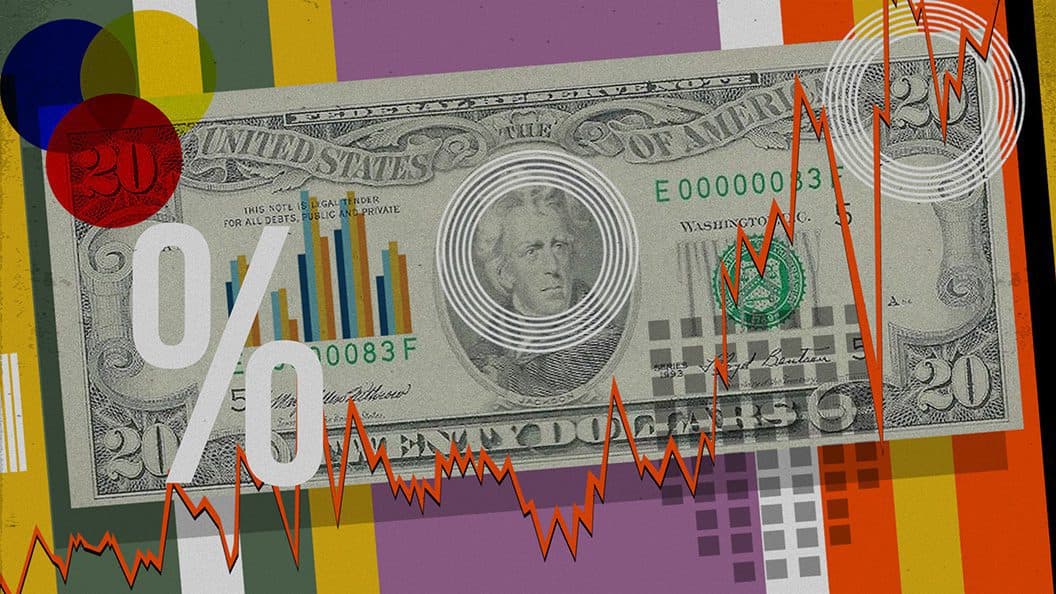Analysts Weigh Likelihood of March Rate Hikes as CPI Disappoints Again
As inflation continues to rise more than expected, analysts consider what the Fed might do at its next policy setting meeting

Blockworks exclusive art by Axel Rangel
- US consumer prices are still on the rise, with January showing the largest year-on-year increase since 1982
- Inflation woes have already been priced into the market, analysts say, but rate hike speculation continues
US consumer prices were on the rise again in January, once again showing the biggest annual inflation increase in 40 years. In the 12 months through January, the consumer price index rose 7.6%, up from 7% in December, marking the largest year-on-year increase since 1982, according to the latest index report.
Bitcoin and ether lost 3.6% and 5.2%, respectively, immediately following the release of the report before paring gains later in the morning Thursday. Equities also experienced a slight dip at the open but mostly rose later in the trading session.
“US stocks recovered most of the inflation-driven losses as investors anticipate that pricing pressures could be peaking just before the Federal Reserve’s March policy meeting,” Edward Moya, senior market analyst at OANDA, said. “Two of the biggest inflationary pressures have been surging shelter prices and new vehicles, both of which seem poised to be improving next quarter.”
Economists expected a 7.3% increase in January. This is the eighth time in the last 10 months that economists have underestimated the change in inflation.
“[The CPI reading is] definitely higher than expectations and opens up the possibility of accelerating inflation — which is really bad,” said Joseph Wang, a former senior trader on the Fed’s open markets desk.
“With a few Fed presidents already on record against a 50 basis point hike, I don’t think it’s likely.”
Last week, Wang told Blockworks he doesn’t expect such a move in March, but aggressive rate hikes later in the year remains a possibility.
“I suspect that they’re going to be very aggressive — maybe one hike, every meeting, maybe even 50 basis points at one meeting in the future,” Wang said.
On Thursday, Federal Reserve Bank of St. Louis President James Bullard, told Bloomberg that he is in favor of more rapid tightening of as much as a full percentage point by summer.
The odds of raising the target rate to 50-75 bps in March increased to 81%, following the comments, according to Fed funds futures.
“The Fed has not started a rate cycle with a 50 bp increase since at least 1990,” Nicholas Colas, co-founder of DataTrek Research, wrote in a recent note. “Such a move would therefore be very unusual, but Chair Powell has repeatedly said the current environment is unlike any other in recent memory.”
Speculating when rate hikes might begin is difficult, Wang pointed out.
“The Fed hates to surprise the market, and the current futures pricing is too unclear,” said Wang. “I’d expect Fed speakers to come out in the coming days to telegraph clearly either way. They probably don’t know what to do yet, though.”
The Fed’s next Federal Open Market Committee meeting is scheduled for March 15 and 16. A summary of economic projections will also be released following the meeting.
This story was updated on Feb. 11 at 8:00 am ET, to reflect new comments by FOMC voter James Bullard.
Get the news in your inbox. Explore Blockworks newsletters:
- The Breakdown: Decoding crypto and the markets. Daily.
- 0xResearch: Alpha in your inbox. Think like an analyst.






